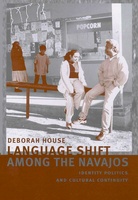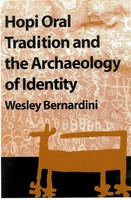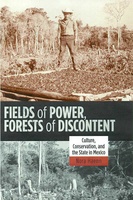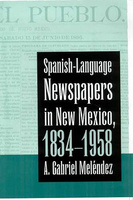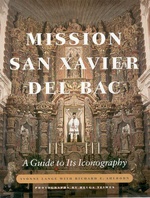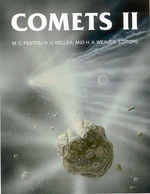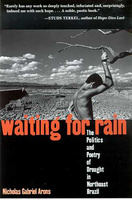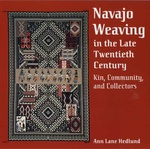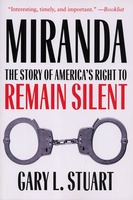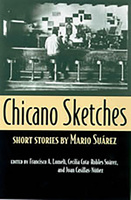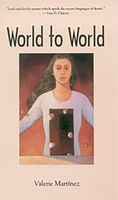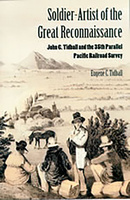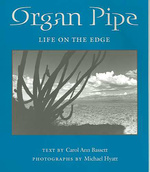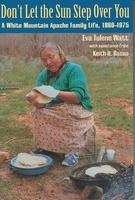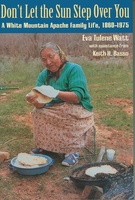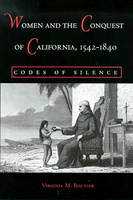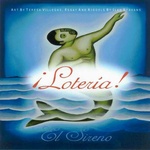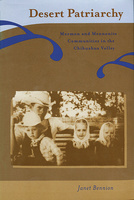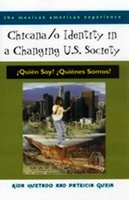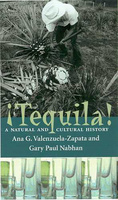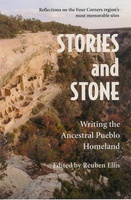The University of Arizona Press is the premier publisher of academic, regional, and literary works in the state of Arizona. They disseminate ideas and knowledge of lasting value that enrich understanding, inspire curiosity, and enlighten readers. They advance the University of Arizona’s mission by connecting scholarship and creative expression to readers worldwide.
Language Shift among the Navajos
Identity Politics and Cultural Continuity
Hopi Oral Tradition and the Archaeology of Identity
As contemporary Native Americans assert the legacy of their ancestors, there is increasing debate among archaeologists over the methods and theories used to reconstruct prehistoric identity and the movement of social groups. This is especially problematic with respect to the emergence of southwestern tribes, which involved shifting ...
Fields of Power, Forests of Discontent
Culture, Conservation, and the State in Mexico
Chia
Rediscovering a Forgotten Crop of the Aztecs
Thirty Years Into Yesterday
A History of Archaeology at Grasshopper Pueblo
Animals and the Maya in Southeast Mexico
The Safford Valley Grids
Prehistoric Cultivation in the Southern Arizona Desert
Miniature Crafts and Their Makers
Palm Weaving in a Mexican Town
Waiting for Rain
The Politics and Poetry of Drought in Northeast Brazil
The Hanford Reach
A Land of Contrasts
Navajo Weaving in the Late Twentieth Century
Kin, Community, and Collectors
Miranda
One of the most significant Supreme Court cases in U.S. history has its roots in Arizona and is closely tied to the state's leading legal figures. Miranda has become a household word; now Gary Stuart tells the inside story of this famous case, and with it the legal history of the accused's right to counsel and silence.
Ernesto Miranda was an uneducated Hispanic man arrested in 1963 in connection with a series of sexual assaults, to which he confessed within hours. He was convicted not on the strength of eyewitness testimony or physical evidence but almost entirely because he had incriminated himself without knowing itand without knowing that he didn't have to. Miranda's lawyers, John P. Frank and John F. Flynn, were among the most prominent in the state, and their work soon focused the entire country on the issue of their client's rights. A 1966 Supreme Court decision held that Miranda's rights had been violated and resulted in the now-famous "Miranda warnings." Stuart personally knows many of the figures involved in Miranda, and here he unravels its complex history, revealing how the defense attorneys created the argument brought before the Court and analyzing the competing societal interests involved in the case. He considers Miranda's aftermathnot only the test cases and ongoing political and legal debate but also what happened to Ernesto Miranda. He then updates the story to the Supreme Court's 2000 Dickerson decision upholding Miranda and considers its implications for cases in the wake of 9/11 and the rights of suspected terrorists. Interviews with 24 individuals directly concerned with the decisionlawyers, judges, and police officers, as well as suspects, scholars, and ordinary citizensoffer observations on the case's impact on law enforcement and on the rights of the accused.
Ten years after the decision in the case that bears his name, Ernesto Miranda was murdered in a knife fight at a Phoenix bar, and his suspected killer was "Mirandized" before confessing to the crime. Miranda: The Story of America's Right to Remain Silent considers the legacy of that case and its fate in the twenty-first century as we face new challenges in the criminal justice system.
Isabella Greenway
She was at home on the western range and in New York salons. An energetic entrepreneur who managed a ranch, an airline, and a resort. A politician who became a key player in the New Deal. Isabella Greenway blazed a trail for remarkable women in Arizona politics today, from Janet Napolitano to Sandra Day O'Connor. Now Kristie Miller ...
Huichol Mythology
Best known for their ritual use of peyote, the Huichol people of west-central Mexico carried much of their original belief system into the twentieth century unadulterated by the influence of Christian missionaries. Among the Huichol, reciting myths and performing rituals pleases the ancestors and helps maintain a world in which ...
Chicano Sketches
Short Stories by Mario Suárez
Soldier-Artist of the Great Reconnaissance
John C. Tidball and the 35th Parallel Pacific Railroad Survey
Organ Pipe
Life on the Edge
Nature and the City
Making Environmental Policy in Toronto and Los Angeles
Mo
The Life and Times of Morris K. Udall
Don't Let the Sun Step Over You
A White Mountain Apache Family Life, 1860–1975
Don't Let the Sun Step Over You
When the Apache wars ended in the late nineteenth century, a harsh and harrowing time began for the Western Apache people. Living under the authority of nervous Indian agents, pitiless government-school officials, and menacing mounted police, they knew that resistance to American authority would be foolish. But some Apache families ...


